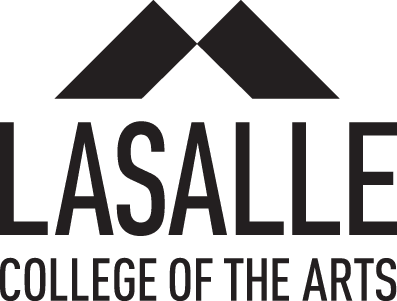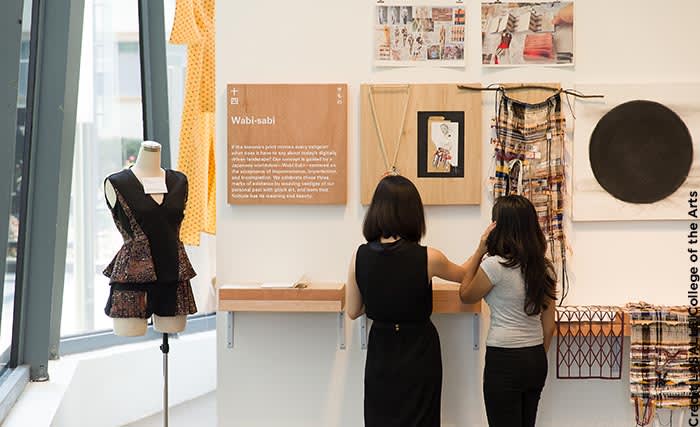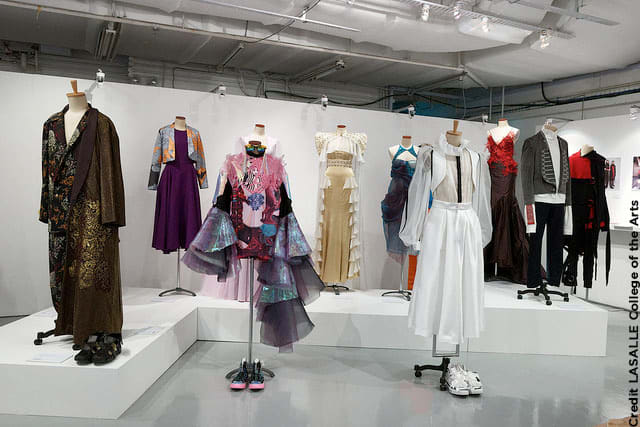



johndoe@gmail.com
Are you sure you want to reset the form?
Your mail has been sent successfully
Are you sure you want to remove the alert?
Your session is about to expire! You will be logged out in
Do you wish to stay logged in?
Discover how the interdisciplinary content within Bloomsbury Fashion Central has directly supported academics and students across the visual arts, humanities, and social sciences.

"We find the films on “Bloomsbury Historic Dress in Detail” a great addition to the theoretical aspects of our historical pattern cutting classes. The length of the features make it easy to be integrated in our modules. This has also been confirmed by the students, who love being able to see result of the pattern drafting of the costumes on the body and in motion during one lesson."
Costume Design Department of the University of Fine Arts Dresden
"Overall, using the case studies has been a brilliant experience, as it enhanced my knowledge and complemented my teaching style, (…) by encouraging myself and my students to be self-reflective, socially responsible, actively participate and critique knowledge, and develop a conscious voice."
The Bloomsbury fashion business case studies have been an invaluable digital resource for my teaching last year (as Associate Lecturer at London College of Fashion, UAL) allowing my BSc Psychology of Fashion undergraduates to critically appraise current fashion business problems and solutions in an engaging and innovative way. During my classes on the future of fashion, students would read, discuss, and attempt to skilfully address a wide range of business case studies on topical and important real-life issues, including ethics, sustainability, and diversity in fashion. They were then asked to apply strategic thinking to develop feasible solutions, based on research, knowledge, and creativity, to develop a more ethical and sustainable fashion industry.
My students found the activities highly engaging as well as challenging at times, and these would often generate interesting and lively discussions and debates in the classroom. The case studies have been incredibly useful for students to enhance their critical analytical and problem-solving skills, as well as to encourage their creativity and their skills in thinking outside the box.
There is also an abundance of exciting and well-written case studies to select from exploring 'How Lack of inclusivity lost Victoria's Secret its Lingerie Crown', to Patagonia's 'Creative Sustainability Strategy', and other complex issues around identity, cultural appropriation, green-washing, and transparency in fashion.
Some particular favourite features of mine are the ease of use and range of case studies available (which are neatly organised into different sub-topics!) and detailed suggestions within each case study for potential classroom-based activities depending on your preference. The case studies are also helpfully organized into levels of expertise, ranging from 'introductory' 'intermediate' up to the more 'advanced' level of case studies, meaning that I was able to tailor the case studies according to my students' needs. I did this by starting the course using some of the more straightforward introductory case studies and as students demonstrated the ability to develop convincing solutions, well-rounded arguments, and to make, justify, and communicate their decisions, I then gradually introduced more complex case studies which generated more nuanced discussions and solutions.
It was also important to remind students that there is never any 'perfect solution', but the key is trying to work out which is the most feasible by considering the challenges each solution presents and the implications for the future. Depending on the dilemma presented, students might take on the role of a small business owner, CEO, marketing director, or consumer, and engage in brainstorming and developing solutions using a range of communication methods, such as in-class group presentations and designing individual press releases and social media campaigns.
Another excellent feature of presenting a range of different activities for teachers is that it provides flexibility in teaching styles and the option to introduce different ways for students to present solutions in class. I also found it useful that there were different time-length activities that could be conducted over a 1-hour seminar or over the course of several lessons, keeping the activities interesting and engaging every week. Overall, using the case studies has been a brilliant experience, as it enhanced my knowledge and complemented my teaching style, (which draws on critical pedagogy) by encouraging myself and my students to be self-reflective and socially responsible, to actively participate and critique knowledge, and to develop a conscious voice.

Nadya oversees Cultural and Contextual Studies in Fashion in the BA (Hons) Fashion Design and Textiles and BA (Hons) Fashion Media and Industries programmes, where she lectures fashion history and theories, and teaches academic reading and writing. She also runs Creative Industries and Opportunities, which prepares all BA (Hons) Fashion students for work in the fashion industry.
At LASALLE College of the Arts, students take compulsory modules in Cultural and Contextual Studies in Fashion throughout their three years in the BA(Hons) Fashion Design Textiles and BA(Hons) Fashion Media and Industries programmes within the School of Fashion, which I oversee. These modules provide the historical background and theoretical framework for their work in the studio.

Over four semesters in the first two years, the students learn modern fashion history; appreciate fashion as both visual and material culture; explore identities expressed through dress, such as gender and religion; as well as analyse interdisciplinary approaches to fashion, including its connections with art, music, film and architecture. In their third and final year, the students write a dissertation under supervision.
There are a few challenges in teaching students to research and write about fashion in an academic context. Firstly, many students who decide to study fashion are not instinctively comfortable with research and academic writing. The reliable information available on Berg Fashion Library is provided in accessible language and at manageable lengths, and makes the endeavour less daunting and thus more attractive for them to stay on course. It is one of the first tools that the students are introduced to when they begin their studies.
In the first semester, when they learn to identify iconic garments, pioneering designers and cultural forces that have shaped fashion history, the Berg Fashion Library’s images, biographical articles and longer essays that contextualise fashion in particular time periods and specific societies have complemented lectures and tutorials, and given the students confidence to complete their assignments with the knowledge that the platform provides.
Secondly, students rely heavily on the internet for information to complete their assignments, and Berg Fashion Library allows them to find precisely what they require for their work in the School of Fashion quite quickly. The “search” and “advanced search” options are great for the students to quickly zoom into their research areas. The “browse” option has helped the students to explore further, especially when they are looking for their dissertation topics in the third year. And “related content” has allowed them to stumble onto more information that they would otherwise not have known about, and provided information that add value to their work.

The Berg Encyclopedia of World Dress and Fashion is a particularly incredible endeavour and resource. There is not much academic writing in the area of Southeast Asian fashion history, so Volume 4: South Asia and Southeast Asia, is particularly useful for the students, especially since the lecturers in the School of Fashion have been collectively pushing them to become more curious about their region to inform their work.
In the same vein, the other volumes are illuminating for students to understand what more could be researched and written about in Southeast Asia, and for them to draw parallels and distinctions between what is happening in fashion landscapes elsewhere and in their own region. Volume 10: Global Perspectives is particularly eye-opening for the students in this regard.
The exhibition archive is also very helpful to us at the School of Fashion at LASALLE as we have a significant curating component in our curriculum, with all Level 2 students from both programmes working together towards putting up an exhibition as their studio project. Extensive research needs to be carried out not only in terms of content matter, but the curation process too, and Berg Fashion Library is a one-stop shop for both.
In addition, with the modules’ emphasis on visual analysis, the images available through partnerships with museum archives such as the Victoria and Albert Museum in London and the Museum at Fashion Institute of Technology in New York means that the students are able to access detailed images directly and download them for use in their assignments, without having to look for them on multiple websites, helping them save time, and often leading to finds that they might have otherwise missed.
A service that Berg Fashion Library offers is providing citations from its articles in the required referencing style for the students’ assignments. This ensures that the citations are done well, which is welcome by both students and tutors.
All in all, Berg Fashion Library is an excellent platform that continues to grow and improve to provide relevant and interesting information about historical and contemporary fashion to its users. It is equally useful for more targeted use and for encouraging exploration, and has proven to be an indispensable research tool for both lecturers and students in the School of Fashion at LASALLE College of the Arts. We are positive that we will continue to learn from it, and hopefully also contribute to it in the years to come.